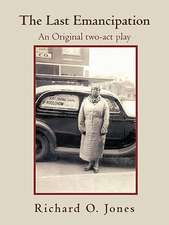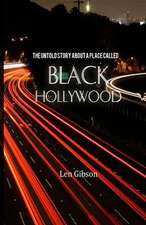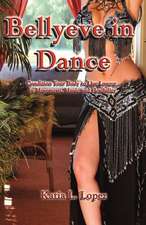The Sixth Sense of the Avant-Garde: Dance, Kinaesthesia and the Arts in Revolutionary Russia
Autor Irina Sirotkina, Roger Smithen Limba Engleză Hardback – 19 apr 2017
| Toate formatele și edițiile | Preț | Express |
|---|---|---|
| Paperback (1) | 170.95 lei 6-8 săpt. | |
| Bloomsbury Publishing – 12 dec 2018 | 170.95 lei 6-8 săpt. | |
| Hardback (1) | 567.25 lei 6-8 săpt. | |
| Bloomsbury Publishing – 19 apr 2017 | 567.25 lei 6-8 săpt. |
Preț: 567.25 lei
Preț vechi: 815.04 lei
-30% Nou
Puncte Express: 851
Preț estimativ în valută:
108.54€ • 113.34$ • 89.63£
108.54€ • 113.34$ • 89.63£
Carte tipărită la comandă
Livrare economică 15-29 aprilie
Preluare comenzi: 021 569.72.76
Specificații
ISBN-13: 9781350014312
ISBN-10: 1350014311
Pagini: 232
Ilustrații: 11 bw illus
Dimensiuni: 138 x 216 x 18 mm
Greutate: 0.41 kg
Editura: Bloomsbury Publishing
Colecția Methuen Drama
Locul publicării:London, United Kingdom
ISBN-10: 1350014311
Pagini: 232
Ilustrații: 11 bw illus
Dimensiuni: 138 x 216 x 18 mm
Greutate: 0.41 kg
Editura: Bloomsbury Publishing
Colecția Methuen Drama
Locul publicării:London, United Kingdom
Caracteristici
It
shows
how
dance
had
a
central
role
in
shaping
other
arts
practices
and
contributed
to
the
state
of
knowledge
at
that
time,
with
implications
for
the
present
Notă biografică
Irina
Sirotkinais
a
lecturer
at
the
Institute
for
the
Theory
and
History
of
the
Humanities,
The
Research
University
-
Higher
School
of
Economics,
Moscow,
Russian
Federation.
She
is
a
cultural
historian
who
has
published
on
the
history
of
psychiatry
and
on
the
history
of
free
dance.Roger
Smithis
Emeritus
Reader
in
the
History
of
Science,
Lancaster
University,
UK
and
Associate
Fellow
at
the
Institute
of
Philosophy
of
the
Russian
Academy
of
Sciences,
Moscow,
Russian
Federation.
He
is
an
internationally
well
known
historian
and
philosopher
of
psychology
and
the
human
sciences,
the
author
of
standard
texts
in
the
field
as
well
as
specialist
studies
relating
to
the
history
of
mind
and
brain
and
the
understanding
of
'being
human',
includingInhibition:
History
and
Meaning
in
the
Sciences
of
Mind
and
Brain(1992),
andThe
Norton
History
of
the
Human
Sciences(1997).
Cuprins
List
of
illustrationsPrefaceAcknowledgementsNote
on
text/translationList
of
abbreviations
Introduction:
Movement
and
exuberant
modernismChapter
1
The
sixth
sense
The
senses
Muscular
feeling
and
kinaesthesia
Chapter
2
Search
for
deeper
knowledgeThe
kinaesthetic
intellect'The
higher
sensitivity'
Kinaesthesia
and
synaesthesiaChapter
3
Expression
in
dance
The
new
dance
The
Russian
Hellenes
'Ach,
the
devil
take
it,
they're
dancing
here
again'Chapter
4
Speaking
movement
The
perfect
language:
Andrei
Bely
on
gesture
The
dance-word:
the
creative
union
of
Esenin
and
DuncanWord
plasticity:
thebudetlianeand
the
bare-footed
Chapter
5
By
'the
fourth
way'
The
mystic
arts
From
Dalcroze
to
Gurdjieff
'Presence'
Chapter
6
Thinking
with
the
body
Mayakovsky
dances
the
fox-trot
Brik-dance
Who
thought
up
biomechanics?
Chapter
7
Art
as
bodily
knowledge
Technique
Kinaesthesia
in
cultureFurther
readingNotesIndex
Recenzii
This
book
is
a
treasure
chest
of
personages
and
practices-everyone
from
Kandinsky
to
Blok,
from
Scriabin
to
Shklovsky,
and
multiple
souls
in
between;
everything
from
Dalcroze
Eurythmics
to
the
Foxtrot.
It
offers
dynamic
new
ways
to
view
the
cultural
history
of
this
time.
It
all
but
exhorts
its
readers
to
go
out
and
dance
themselves.
Many
sources
were
crunched
to
make
this
book's
chapters,
and
many
exciting
roads
lead
out
of
them
into
future
projects.
This volume examines kinesthesia-the sense of movement-as a foundation of personal knowledge and cultural innovation, claiming primacy of kinesthesia over the other senses in that it affords unmediated contact with the world. Grounding their analysis of this "sixth sense" in historical context, Sirotkina and Smith reference the attraction of late-19th-century Europeans to ancient Hellenic life, citing a joyful universalism that particularly appealed to late czarist and revolutionary-era Russians. Evidencing the spirit of "exuberant modernism," movement-particularly dance-is seen as central to avant-garde culture, infusing poetry, mysticism, literary analysis, graphic art, and theater. Andrei Bely's acute sensitivity to gesturebecomeshis verse, and Vladimir Mayakovsky is seen to compose "posters, like poems, with his whole body." The celebrated artistic union of Sergei Yesenin and Isadora Duncan comes to life as a shining instance of the primacy of movement across the arts, and Vsevolod Meyerhold develops his biomechanical exercises for training actors. The concluding chapter projects the avant-gardists' primacy of movement to present-day validation of kinesthetic experience as a vital source of knowledge. The translation is labored in places, but the extensive notes and suggestions for further reading compensate and make the book invaluable. Summing Up: Recommended.
This volume examines kinesthesia-the sense of movement-as a foundation of personal knowledge and cultural innovation, claiming primacy of kinesthesia over the other senses in that it affords unmediated contact with the world. Grounding their analysis of this "sixth sense" in historical context, Sirotkina and Smith reference the attraction of late-19th-century Europeans to ancient Hellenic life, citing a joyful universalism that particularly appealed to late czarist and revolutionary-era Russians. Evidencing the spirit of "exuberant modernism," movement-particularly dance-is seen as central to avant-garde culture, infusing poetry, mysticism, literary analysis, graphic art, and theater. Andrei Bely's acute sensitivity to gesturebecomeshis verse, and Vladimir Mayakovsky is seen to compose "posters, like poems, with his whole body." The celebrated artistic union of Sergei Yesenin and Isadora Duncan comes to life as a shining instance of the primacy of movement across the arts, and Vsevolod Meyerhold develops his biomechanical exercises for training actors. The concluding chapter projects the avant-gardists' primacy of movement to present-day validation of kinesthetic experience as a vital source of knowledge. The translation is labored in places, but the extensive notes and suggestions for further reading compensate and make the book invaluable. Summing Up: Recommended.





















